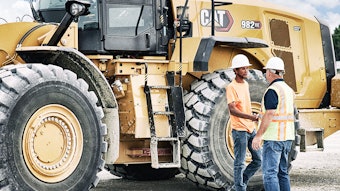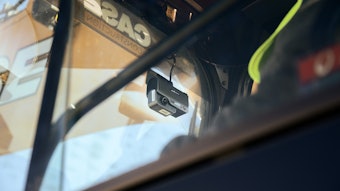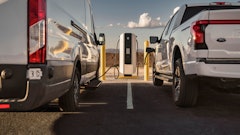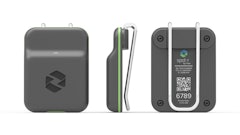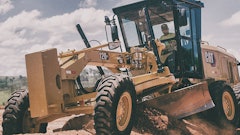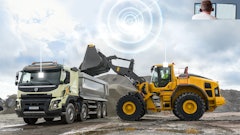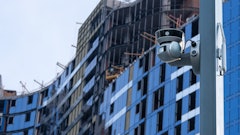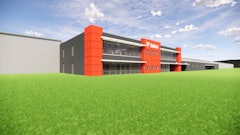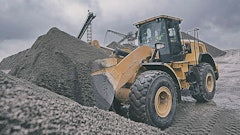
By Jonathan Barnes, Contributing Editor
Data collected by unmanned aerial vehicles are improving more construction tasks at such a rate that many contractors have little choice but to seriously evaluate using the technology. Drone systems are now capable of gathering data at survey-level accuracies to create 3D models of existing conditions to prepare contractors more accurately for better pre-construction planning. And the low cost of gathering the data improves everybody’s understanding of the work in progress through the life of a project.
Efficiencies that result from the improved insights that drone data provides are drawing many contractors to pursue drones use. And with the tight profit margins in construction, which can be quickly erased by overruns, finding savings is always a winning proposition.
But should you buy a drone package yourself, hire a vendor to handle the flights and data delivery, or stay with your current methods? It depends upon your company’s expectations.
Drones are priced depending on the capability, and range in cost from $2,500 for a kit with a small drone with a 20 megapixel camera, to the $10,000 to $15,000 range for the more industrial-type drone capable of producing the kind of data contractors require, to high-end drones that include LiDAR sensors priced from $75,000 to $100,000.
“Prices are determined by overall scope and final deliverable requirements (resolution, accuracy, file types, etc.),” says says Steven Fargo, CEO/Co-founder of DataWing Global, a drone consulting company. “Typically you can expect to pay around $200 for a small job and around $1,500 a very large construction job. Increased volume or longer project commitments will result in a discount.”
“It is all by quote and bid. Our pricing is set by quote based upon degree of administrative setup time (mostly flight clearances), equipment daily rates (Velodyne, Riegl, additional photogrammetry sensor integration), product development rates, per diem and travel,” says Daniel Hubert, owner of Modus Robotics, a drone consultant. “Our base price is $8,000/day and we can cover 5 to 12 miles or 20 to 200 acres, depending on terrain conditions. Also, we charge more if we are working in an urban environment where we have to have more visual observers and population control.”
“At Skynetwest, we charge by what the customer is actually paying for, the gigabyte. This is dependent upon how accurate of data the customers want,” says Noah Ruiz, President/CEO of Skynetwest, another drone consultancy. “We can adjust our parameters to what the customer is looking for in terms of accuracy and GSD.
“Smaller companies would be better off with a service provider,” says Noah Ruiz, President/CEO of Skynetwest, another drone consulting company. “Larger companies, who will do multiple surveys, might want to open a new department in the company to do the drone work.”
Evaluating drone needs
A contractor should question whether a drone-connected system will do the task better, quicker or cheaper than it’s currently being done.
Such tasks might be gathering topographical  Drones are cutting back on legwork required of surveying crews. And by delivering usable topographic data, drones are helping contractors measure earthworks progress and other aspects of construction.
Drones are cutting back on legwork required of surveying crews. And by delivering usable topographic data, drones are helping contractors measure earthworks progress and other aspects of construction.
A contractor might choose not to develop drone expertise that a drone consultant can provide, though increasing availability of automated flight plans and data analysis have dramatically lowered the barriers to becoming an effective drone user. Other contractors will just need simple project documentation – a task they can do with their own drone package and some training. Many specialty contractors are using drones in this way.
“I think drones make the most sense for a company that is already doing well [measuring and monitoring projects] and wants to use the drone to augment what they already have. It’s being able to use that data better,” says Michael H. Cohen, president/CEO of Industrial Skyworks, a drone company. “Is your existing [method] a convenience factor? Would it be better to have a drone in-house? Can you use a higher level of data?”
If you plan to buy, what kind of drone is best for you—preprogrammed or pilot-controlled? Setting up your own drone operation depends upon the tasks you intend to complete with the drone, and upon whether a specialist’s expertise with drones is needed for such tasks.
But which method is the best for your company? That depends, in part, upon your company’s needs, and the size of the area to be covered. Smaller tracts of 100 acres or less can often be easily handled by pre-programmed drone flights, while larger tracts can require a different method or combination of methods.
Contractors most likely to benefit from future drone use include firms that need detailed understanding of square footage or acreage fast, like for earthmoving, site development or paving work; those that need to document completion of various stages of a project, like subcontractors; and those who must come up with precise measurements for preconstruction plans, like general contracting companies.
Hiring a vendor to do the flights and analysis could provide the same benefit as flying the drone yourself, but with better results in terms of data gathering and analysis of the data. Some companies specialize in analysis software, which can be quite powerful when used by an expert. And consultants will allow a contractor to choose only use the services they need, allowing them to ramp up drone use or cut back as needed.
“We offer clients steps of value,” says Fargo. “A lot of time a client just needs consistent, reliable data, in images.”
DataWing Global and other service providers will perform drone flight/data analysis projects for a company. In addition to those services, DataWing Global provides equipment, setup and training for companies that want to start their own drone program.
Seeing results
For some contractors, less is more. They prefer a simple drone system they can afford and hold; others want to lease equipment and farm out services like drones, just as they lease heavy equipment according to their cyclical business needs.
But for those who choose to fly their own path with a drone, the benefits are apparent.
“Flying the Kespry drone is so simple to use. It takes the controls out of my hands,” says Jon Layne, business development manager for Sully-Miller Co., an aggregate and construction company.
Kespry’s pre-programmable drone system can take off, calculate its flight path and land, with no joystick needed. As with a pilot-controlled drone, though, a person is needed to observe as the “pilot” with a pre-programmed drone. But the system is simple, and reflective of a trend of easy-to-use drones on construction sites.
Others have noticed benefits on their own jobsites. Gino Digiacomo, a survey manager for Fred Smith Construction, is happy with the results he’s seen with Kespry. It has smoothed workflows for Fred Smith Construction.
“We would go out and do a topography of a site, but it would dedicate so much time and effort to get that project completed. Now, we fly it in hours,” Digiacomo says.





